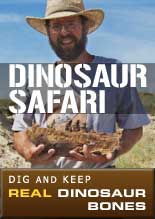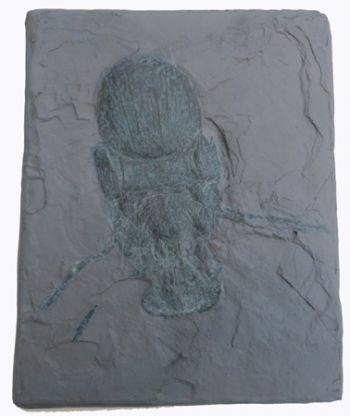
Megarachne servinei was originally described in 1980 by the Argentinean paleontologist Mario Hunicken. The holotype was recovered from the Pallero Member of the Bajo de Veliz Formation of Argentina, a locality dated to the early Permian of about 296 million years ago. Hunicken wrongly identified the specimen as a mygalomorph spider based on the shape of the carapace, the 15 millimeters wide circular eye tubercle located between the two eyes in the center of the head, a structure in front of the carapace he identified as spatulate chelicerae, and a circular structure behind the first body segment which he identified as the "moderately hairy" abdomen. Hunicken's identification relied heavily on X-ray microtomography of the holotype, and additional hidden structures were also extrapolated from the X-radiographs.
With a leg-span estimated to be 20 inches, this would have made Megarachne servinei the largest spider to have ever existed, far exceeding the goliath bird-eater (Theraphosa leblondi) which has a maximum leg-span of only around 12 inches. The discovery quickly became popular and various exhibits with reconstructions of Megarachne servinei as a gigantic spider were set up in museums around the world.
The identification of the specimen as a spider was doubted by some arachnologists. Even Hunicken himself acknowledged discrepancies in the morphology of the fossil that could not be accommodated with an arachnid identity. However, the holotype was by then deposited in a bank vault and other paleontologists had access only to the plaster casts.
In 2005, a second, more complete specimen was recovered from the same locality and horizon. A research team led by the British paleontologist and arachnologist Paul A. Selden and consisting of Hunicken and Argentinean arachnologist Jose A Corronca reexamined the holotype in light of the new discovery. They concluded that Megarachne servinei was not a spider, but was in fact, a large eurypterid more commonly known as "sea scorpions" and related to spiders, true scorpions, and horseshoe crabs.
resin
16 x 20 inches
Item 2547
Category: Replicas
Type: Skeletons
Phylum: Invertebrates
Class: Not Specified
MORE PHOTOS:
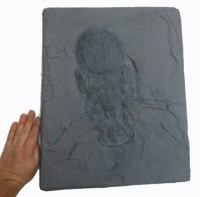
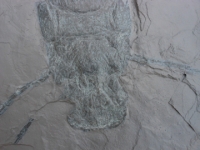
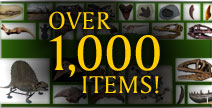
Now Over 1,000 Items!
PrehistoricStore.com offers the largest selection of replica fossils and other fossil-related products anywhere in the world!
Download a Full Catalog (3MB PDF)
OVER 260 PAGES OF REPLICAS AND MORE!
